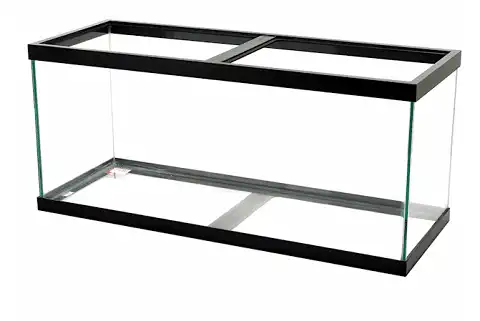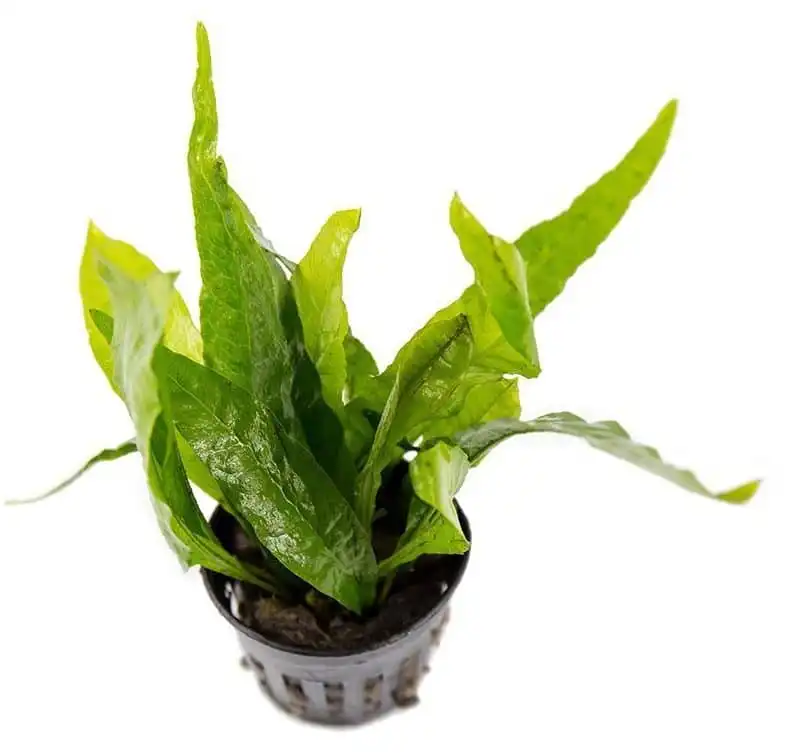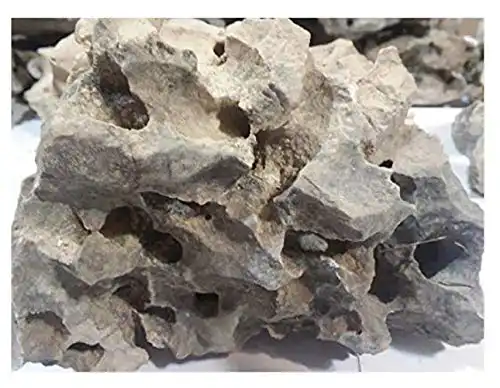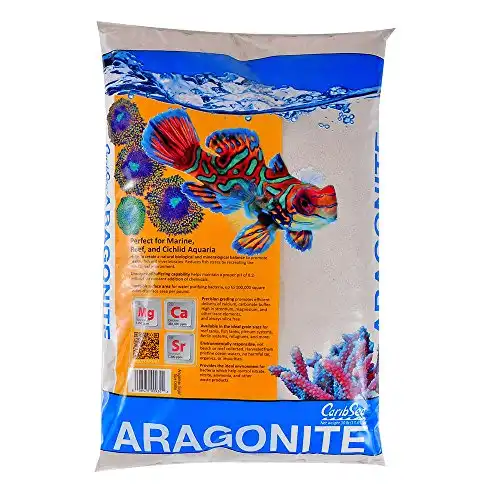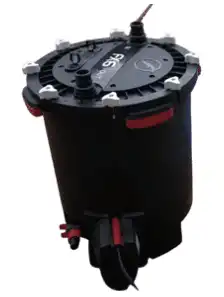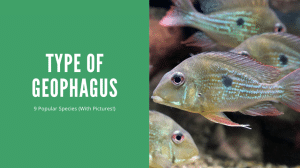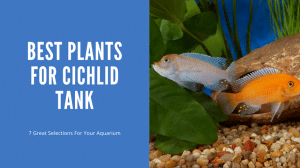Thank you for visiting! By the way… any links on this page that lead to products on Amazon and other stores/partners are affiliate links Aquarium Store Depot earns a commission if you make a purchase.
Yellow lab cichlid or electric yellow cichlids or lemon drop cichlid are popular freshwater fish for all the right reasons—They are beautiful, vibrant, easy to keep, and less demanding. In a nutshell, if you’re a beginner, yellow lab cichlids are perfect for you.
In this article, I’ll discuss everything about freshwater yellow lab cichlids and share some tips to keep them happy and healthy.
Read on.
Key Takeaways
- The Yellow lab cichlid is a mouthbrooder. Meaning the female carries fertilized eggs and fry in her mouth until they are big enough to survive on their own.
- They are carnivores in the wild and feed on small invertebrates and algae. However, in captivity, they are omnivores and eat a varied diet.
- They have been selectively bred resulting in a range of different colors and patterns
- The male yellow lab cichlid is larger in size and more colorful than its female counterparts.
Species Overview
| Scientific Name | Labidochromis caeruleus |
| Common Names | Yellow Lab, Electric yellow cichlid, lemon drop cichlid |
| Family | Cichlidae |
| Origin | East African Central Western coastal region of Lake Malawi |
| Diet | Omnivore |
| Care Level | Moderate |
| Activity | Medium |
| Lifespan | 8 to 10 years |
| Temperament | Semi-Aggressive |
| Tank Level | Bottom |
| Minimum Tank Size | 30 gallons |
| Temperature Range | 76 – 82°F |
| Water Hardness | 10-20 dGH |
| pH Range | 7.8 to 8.6 |
| Filtration/Water Flow | Moderate to high |
| Water Type | Freshwater |
| Breeding | Egg Layer/Mouthbrooder |
| Difficulty to Breed | Easy |
| Compatibility | Limited, Generally African Cichlid only |
| OK, for Planted Tanks? | With Caution |
Brief Introduction
Yellow lab cichlids, commonly known as Electric yellow cichlids and yellow labs are popular freshwater fish that originates from Lake Malawi in East Africa.
They are known for their super bright yellow coloration and smaller fish size that is easy to maintain and a treat to watch in your home aquariums. Yellow lab cichlids are beginner friendly fish with unique breeding behavior where the male fish establishes and defends its territories and females lay their eggs on flat surfaces.
Overall, yellow lab cichlids are an excellent and beautiful addition to your home aquariums that add opulence and life wherever they go.
Origin & Habitat
The electric yellow cichlids are found in the rocky banks and heavily vegetated regions of Lake Malawi. Originally, the yellow lab cichlid is from the Nkata Bay of Lake Malawi, which is the home of other African Cichlids. In their natural habitat, these fish mostly dwell in the rocks and reaches a length of around 8 inches.
By the end of 1986, the yellow African cichlid was available to buy for aquarium hobbyists. Shortly after, they became popular freshwater fish known for their aesthetic appearance and peaceful nature (for an African Cichlid).
The name, Labidochromis Caeruleus, was given to a blue fish because it was discovered blue in color. However, the yellow color morph was later found along the North East coast of African lakes, now known as electric yellow cichlids1.
Appearance
The Yellow Lab Cichlid’s body is a bright yellow in color, giving them a stunning look. They have an extended, thin body structure, a head that is somewhat pointed, and a prominent forehead. They have longer fins as well, with the dorsal fin reaching all the way back to the tail. Males often outweigh females in size and color, with brighter yellow coloring and longer fins. Females often have a paler color and are smaller.

The young Yellow lab cichlids may have somewhat different patterns from those of adults, but they fade as they get older. Furthermore, some breeders have deliberately bred these fish in an effort to improve particular characteristics, including fin form or color, leading to a variety of various strains and varieties. The Yellow Lab Cichlid is a stunning fish that can give a splash of color to any aquarium
Average Adult Size
The yellow lab cichlids are small fish that grow around a maximum of 5 inches in length for males. The female electric yellow cichlid grows around 3 to 4 inches. However, in some rare cases, they may grow around 6 inches and over, depending on their diet, water quality, and tank size.
Lifespan
The life expectancy of yellow lab cichlids is around 8 to 10 years in captivity. But, they may live for up to 12 years, provided with proper care, a healthy diet, and water conditions.
Food & Diet
Yellow lab cichlids are carnivorous fish in the wild. However, in captivity, they are omnivores. Therefore, their diet should mainly be protein based. High quality fish flakes and fish pellets that are formulated for African cichlids are highly recommended. You can also feed them premium quality frozen foods such as brine shrimp, bloodworms, and krill as occasional treats.
Ron is an African Cichlid breeder with over 25 years in experience who created a line of food that is well balanced. A great option when you can't use frozen foods.
Additionally, it’s important to add plant-based treats to your yellow lab cichlid’s diet, including zucchini, shelled peas, spinach, and lettuce. This food provides necessary nutritional benefits and helps them in consuming a varied diet.
How Often Do You Feed Yellow Lab Cichlids and How Much?
Avoid overfeeding your yellow lab cichlid and maintain a proper schedule to feed yellow lab cichlids as they usually overeat and become overweight, leading to health issues. It’s recommended to feed them a small amount of food only twice or thrice a day.
Anything they can consume within two to three minutes is a general rule of thumb to feed yellow lab cichlids.
Temperament and Behavior
Overall the yellow labs are a species of peaceful and shy cichlid, but during the breeding process, they may become aggressive and territorial. It’s recommended to keep a group of 6 or more fish to alleviate their aggression toward other fish.
Yellow lab cichlids are also active swimmers and appreciate lots of hiding places and open spaces in their fish tanks. Since they are known for their digging behavior, it’s important to supply their tank with plenty of decorations and high-quality substrate.
Yellow Lab Cichlid Tank Mates
Yellow lab cichlids are mildly peaceful fish that are compatible with other like-minded fish species. Therefore, it’s crucial to choose suitable tank mates for yellow lab cichlids.
Some of the best-suited tank mates for electric yellow cichlids are:
- Other African cichlids species, including yellow tail Acei cichlids, Peacock cichlids, Red Zebra cichlids, Johanni cichlids, blue dolphin cichlids
- Synodontis catfish
- Jewel Cichlid
- Red Tail Sharks
Tank Mates to Avoid
Here are the tank mates you should always avoid keeping with yellow lab cichlids.
- Aggressive, larger fish that are territorial. For example, Red Devil cichlid, Jaguar cichlid, Green Terror cichlid, Oscars, or Arowanas.
- Nippy fish, including some species of barbs and tetras.
- Small invertebrates, such as shrimp or snails.
- Any fish incompatible with their pH requirements
Complete Care Guide
Yellow lab cichlids are colorful fish that are easy to care for. Despite being low maintenance, they demand basic tank and water requirements to thrive in captivity.
They are also omnivores in captivity, so a varied diet is essential, along with color-enhancing commercial foods to maintain their vibrant colors.
Like all other cichlids, they require regular maintenance and upkeep with stable water parameters to remain happy and healthy. Let’s dive it Yellow Lab Cichlid Care below.
Tank Requirements
Here are the basic tank requirements to provide a suitable and comfortable environment for your yellow lab cichlid.
Tank Size
Since yellow lab cichlids are community fish that thrive with their other cichlids and compatible fish of different species, a tank size of at least 30 gallons is the bare minimum. However, long term this will cause problems with territorial aggression.
If you want to have a group of around 8 to 12 cichlids, a larger tank or around 55 gallons is a good size.
The 55-gallon aquarium is a great budget-friendly larger tank. It often goes on sale at chain pet stores.
Live Plants
Yellow lab cichlids are active fish and are known to be aggressive toward live plants. Therefore, live plants are not the best choice for your electric yellow cichlids.
However, if you still want to keep live plants for the sake of their beautiful aesthetics, there are some options that are “cichlid-proof”. These include:
- Anubias
- Java Fern
- Vallisneria
- Amazon Sword
- Crinum
- Echinodorus
- Cryptocorynes
While some of these plants will get beat up or eaten, the most bulletproof against these cichlids would be Anubias and Java fern.
Java Fern is one of the easiest and hardiest live plants you can purchase
Tank Decorations
The yellow lab cichlid prefers a tank with caves and enough hiding spots. You can pile rocks into the bottom of the tank, especially when your fish are spawning. That’s because yellow lab cichlids are native to Lake Malawi where there are lots of rocks to build their territories. However, make sure the rocks are not pointed enough to hurt your finned pets.
Other recommended tank decorations are:
- Limestone rocks (get for maintaining pH and hardness)
- Plastic plants
- Terracotta pots
- Ceramic caves
With its ability to raise pH and hardness, this rock is an excellent choice for African Cichlids
Substrate
Yellow lab cichlids usually stay at the bottom of the tank, so the choice of premium substrate is crucial.
You can use sand as the best option because Lake Malawi’s bottom is covered in sand. Therefore, using sand will replicate their natural habitat and keep them happy.
Additionally, crushed coral helps maintain the pH levels in your tank by releasing Calcium carbonate into the water. Thus, it’s also a great option for the substrate. Fine gravel can also be used as a substrate.
Boosts pH
Aragamax is great for African setups as it keeps pH and hardness levels stable
If you want to keep your tank bare bottom for easy maintenance and cleaning, you can do that too. However, it will be unnatural and uncomfortable for your Yellow labs.
Tank Maintenance
Though Yellow Labs fish are hardy and require little maintenance but regular tank cleaning and maintenance are required to keep them healthy for a long.
Filtration and Aeration
Proper filtration is an important step to maintaining a healthy ecosystem for your Yellow lab cichlid.
I recommend installing a filter that is suitable for your tank size and the number of fish you have. Any filter with a turnover rate of around 4 to 6 times the tank volume per hour is ideal for Yellow lab cichlids. You can choose a canister filter, HOB, or sponge filter. However, it’s crucial to clean and replace the filter media regularly.
High flow, large filtration capacity, and quality plumbing - The FX series is designed for monster fish keepers
I also advise putting an air pump or wavemaker in the tank as these species love a well-oxygenated environment. Essentially, you can use sponge filters as they provide filtration and aeration both.
Water Parameters
The ideal water parameters for yellow lab cichlids are as follows:
Water temperature: Between 76-82°F
pH range: 7.8 to 8.6
Water hardness: 10-20 dGH
Tank Maintenance
Tank maintenance is the key to a healthy aquarium. It’s crucial to maintain water temperature. Therefore, I recommend investing in an aquarium thermometer and quality heater to monitor the temperature.
You should perform weekly 25% to 30% water changes to prevent the buildup of fish waste or toxins. In addition to water changes, cleaning the filter and gravel is also important to remove uneaten food and debris.
Breeding
Fun Fact: Yellow lab cichlids are mouth breeders, meaning they keep their young in their mouths until they are ready to hatch.
To reduce the tension in females, I recommend keeping 1 male for every 3 to 6 females. Even though the yellow labs are passive for a cichlid, they might become territorial during breeding.
Here’s how you breed them in a separate tank.
- Separate the mature females and one male in a breeding tank.
- Fill in the tank with cold water to drop the temperature and stimulate mating.
- Feed them protein rich, high quality food free of hormones or unnatural color enhancers
- After spawning, when the fry hatch and are free swimming, separate the mother into another tank.
- Feed the fry high quality protein rich food to promote healthy growth.
Fish Diseases
Unlike many African cichlids, the electric yellow cichlid is very hardy and less susceptible to Malawi bloat. However, if the water temperature and water conditions are not in pristine conditions, they may be infected with Ich, skin flukes, and other parasitic infections, fungal infections, and bacterial infections.
Therefore, it is necessary to maintain water conditions as per the fish’s preferences and feed them high-quality diet to avoid those diseases.
FAQs
Are Yellow Labs Cichlids Aggressive?
No, Yellow Lab Cichlids are not overly aggressive fish. However, they can become territorial and semi-aggressive in a small tank with 2 or more males.
Are Yellow Lab Cichlids good for beginners?
Yes, they are ideal for beginners because they are hardy, beautiful, and tolerate a wide range of water conditions. Also, they are peaceful fish as long as you provide them with the right environment and suitable tank mates.
How Much Do Yellow Lab Cichlids Cost?
The total cost of Yellow lab cichlid depends on a variety of factors, including size, age, quality, etc. On average, young fish may cost you around $5 to $10 per fish. However, adult breeding pairs will cost between $20 to $30.
How Big Do Yellow Lab Cichlids Get?
They are small-to-medium-sized fish that grow approximately 4 to 5 inches in length. The male Yellow Lab Cichlids are slightly larger and more colorful than the females.
How long do they live?
The average lifespan of yellow lab cichlids is 8 to 10 years in captivity.
Final Thoughts
The Yellow lab cichlid is a beautiful freshwater fish that stays happily in a community tank of like-minded fish species. Despite being beautiful, hardy, and low maintenance, they are beginner friendly. Hence, if you’re new to the aquarium hobby, congratulations on finding your perfect bright finned pal!
- About the Author
- Latest Posts
I’m thrilled that you found Aquarium Store Depot! Here you’ll find information on fish, aquariums, and all things aquatics related. I’m a hobbyist (being doing this since I was 11) and here to help other hobbyists thrive with their aquariums! I adhere to a high quality Editorial Process and Review products with real life field usage and practical analysis.



